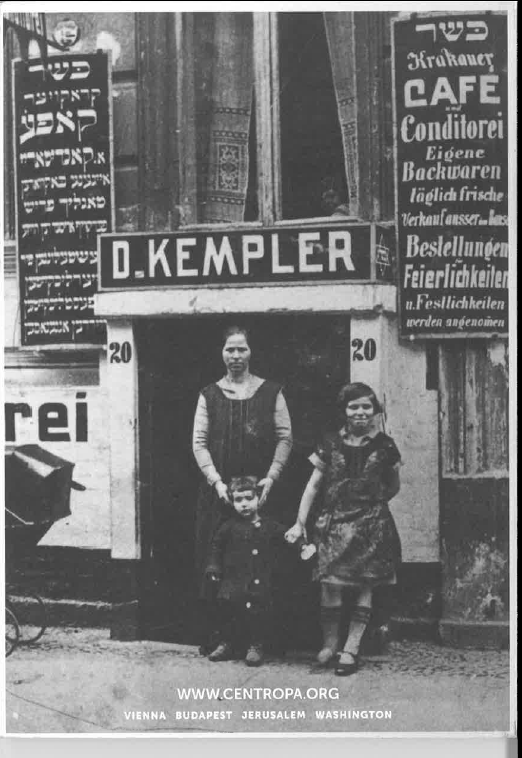Balancing Past and Present: A Jewish Educator’s First Steps in Berlin
Indeed, and if you do – a swift self-correct kicks in with a vengeance. Few Jews can board a flight to Berlin without the accompaniment of an internal cacophony of voices: “don’t buy that, it was made in Germany” – “they’re speaking German, do you hear?” – “Mercedes, who would drive a Mercedes?”
Yet, here I was in Berlin, at Centropa’s Summer Academy. I had come here willingly, nay eagerly, perhaps in order to face that very chorus of voices. After nine days, I left with a more nuanced refrain, deeply moved and forever changed.
Walking the steamy streets of Berlin with fellow educators from different countries, backgrounds, ethnicities, and religions feels like a taste of the prophetic age – nations streaming, walking the walk of the just. We are on a pilgrimage. Yet, this is far from any Jewish Promised Land.
Instead, these are streets of stumbling stones, Stolpersteine, that pepper the cobblestone sidewalks, where pillars of portraits of those gone populate the corners in a street exhibit called “Diversity Destroyed,” and where gentrified neighborhoods are marked with plaques of memory that dispel any illusion that all is as commonplace as it appears. We are walking the haunted avenues, bustling now with hip shoppers, artists and musicians.
First night in Berlin. I am wakened from my jetlagged stupor by the previous occupants of this building. I am drawn to the open wide window. I glance furtively from the fifth floor of Prenzlauer Alle 36 down into the courtyard below. I see vicious dogs and soldiers barking orders. Others stand shivering with fear, clutching their suitcases and precious belongings as if this grip might somehow portend a grasp on their lives that are being brutally grabbed away. I blink. They are all gone. Now, I hear the clicking of glasses, laughter and the strains of music. A late night in Berlin this is. Go back to sleep.
Every step in Berlin is layered – the Wall, the train stations, the museums, strata upon strata. And thus it is with an immense visceral relief we emerge shuddering from Gestapo headquarters. Did I say former Gestapo headquarters? The soul feels what it feels and the shortness of breath is anything but imagined.
The balance of the past and the present becomes the task of the moment. Yes, the here and the now bespeak a new generation’s sensibilities, yet there is a long dark shadow that slowly creeps through our days. The stories we are to hear, though, tell less of horror and atrocities and more of love and miracles. They are the stories that we teachers will share with our young students.
Our plans for sharing are conceived as we sit together, teachers from vastly different places who share an overwhelming sensibility around raising up our next generation. We become a story too. As we sit and struggle to understand each other. We are teachers stretching from Budapest to Berlin, St. Petersburg to San Diego; teachers teaching teachers. With no borders separating us we have these stories to connect us. They speak a truth we all share, no matter our country of origin.
We teachers have friends we’ve come to know through photographs and films. We share a common Centropa canon. We talk animatedly about Lilly, about romantic paper airplanes, about blueberry pirogues and suitcases of letters. These are the ingredients from the interviews and films that grab you and stay with you. What begins awkwardly on Day 1 ends with warmth and affection on Day 7 – suddenly the span from Sarajevo to Seattle is abbreviated.
Now we sit in an outdoor café. The last evening in Berlin and we are at the Judische Madenchenschule, once a Jewish girls’ school, now a Berlin gallery, restaurant and outdoor cafe. It is a warm and sticky evening, with the promise of a breeze in the air. The girls’ pictures line the wall. I hear their chatty voices in the halls and see them traipsing up the stairs. I want to ask them how their day of learning was, and if they have homework, and call after them, “see you tomorrow.” Of course, they have no tomorrow. I shiver and wipe the tears away.
At dinner, I sit across from a German teacher from Bonn. She teaches her students about those years. And about the Jews who had one time lived in her city. They go to where the synagogue once stood. They stand there together in a circle. They solemnly pass a stone from little hand to little hand. The teacher places it delicately where the synagogue had stood. She teaches them that this is what Jews do when they visit a grave, they leave a stone. It testifies. You are not forgotten. We visited here. We heard your story and we will continue to tell it.
Rivy Poupko Kletenik, Head of School at Seattle Hebrew Academy, was a participant in Centropa’s 2013 Summer Academy in Berlin. She is a 2002 recipient of The Covenant Award.

